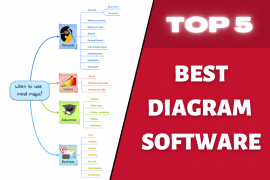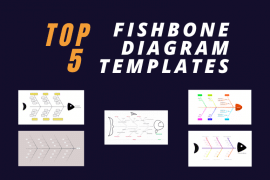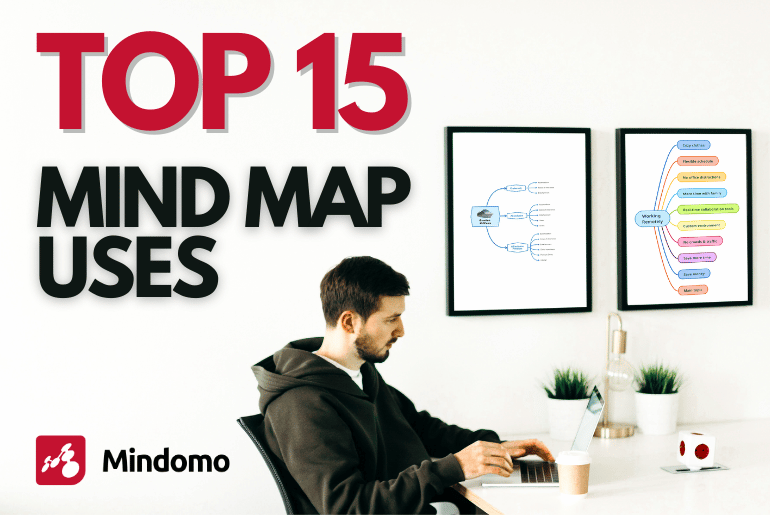
In today’s world, your greatest asset is your mind. That’s why you’ve got to hone your creative thinking skills and your ability to organize ideas. And one of the most effective ways to do that is by using the mind mapping technique.
Creating mind maps allows you to leverage the way your brain works to boost understanding and creativity. It makes it easy to generate ideas. Organizing ideas becomes a snap too. You can even connect ideas that you never would’ve connected otherwise.
Whether you’re a student or on a team of project managers, this powerful technique can help you achieve more. So, let’s check out some practical ways you can use this problem solving tool right now.
1. Use Mind Maps to Generate New Ideas
If you need to brainstorm, look no further than mind maps. Their visual format captures thoughts and concepts quickly. Their branching structure helps you explore connections. And they make it easy to develop new concepts from what you already know.
To use a mind map, start with a central theme or idea. Add smaller branches that include related ideas. And connect everything to the central idea.
Brainstorm without editing. Capture every thought, no matter how wild. Instead, wait to prioritize and organize once you’ve got everything down.
And you don’t have to develop all the information on your own. By using mind map software, you can enjoy real time collaboration with others. So, you can boost productivity alone or with a group.
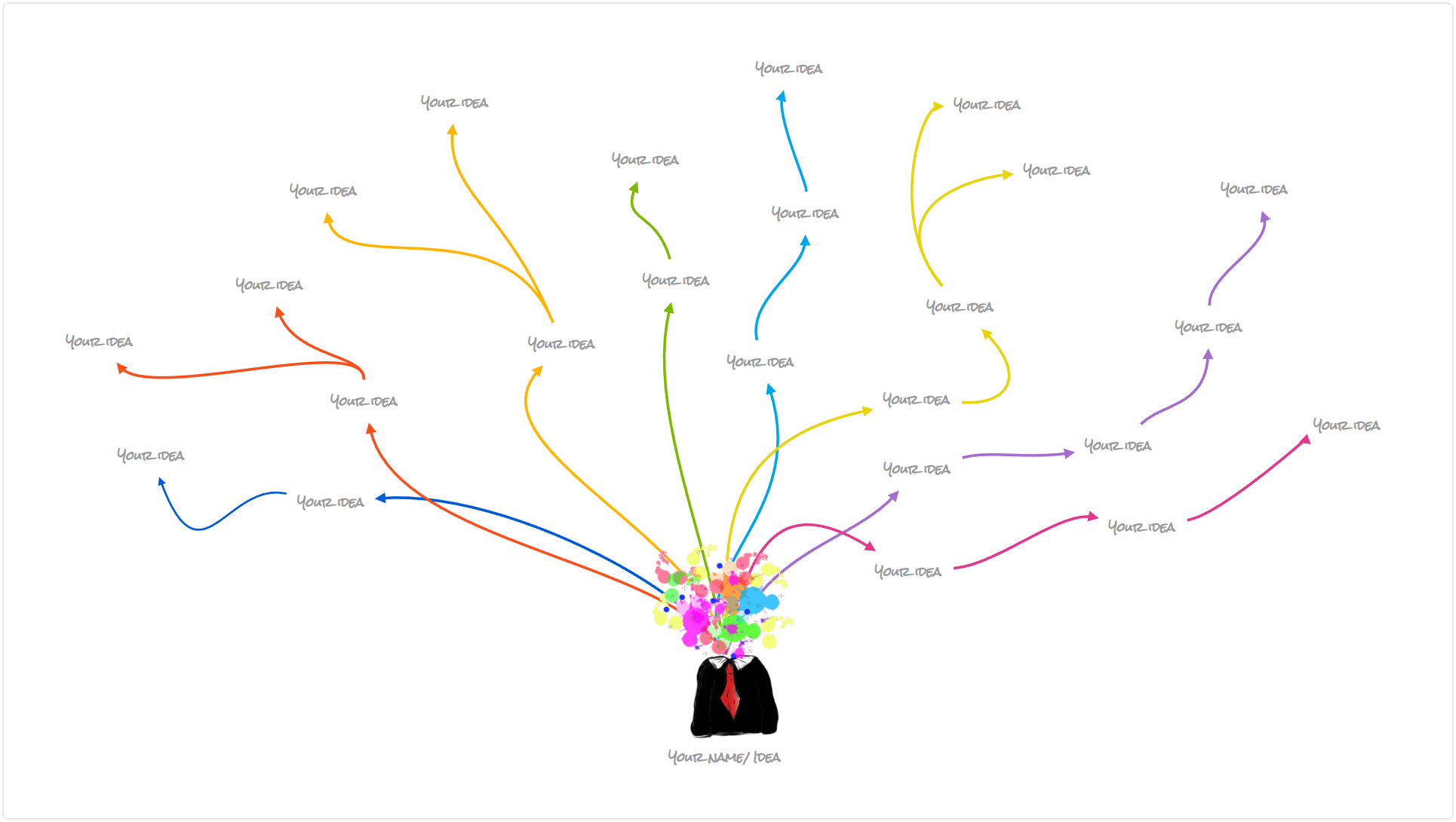
2. Use Mind Maps to Organize Your Work
Looking to organize your work? Create mind maps!
They’re great tools for organizing your work and keeping track of multiple projects and tasks. The visual format allows you to see the big picture and quickly identify priorities. And the branching structure helps you break down complex projects into manageable chunks.
To use a mind map for work organization, start by creating a map for each major project or task. Write the project or task at the center of the map. Then branch out with sub-tasks or action items that need to be completed.
You can add notes, deadlines, and other information to each branch of the map. Plus, you can use color coding to identify tasks with different priorities. You can even turn it into a to-do list by adding tasks to be completed and crossing them off.

3. Use Mind Maps to Summarize a Book
Need to summarize a book for school or your own personal benefit? Mind mapping can help.
Start with the title of your book in the center. Then, add characters, settings, themes, and any other pertinent words radiating out from it. Use single words, phrases, or full sentences.
You could also develop its overarching structure based on its plot. If you go that route, you’d want to add a branch for the beginning, middle, and end. Once you’re finished, you’ll be able to see the book’s big picture at a glance.
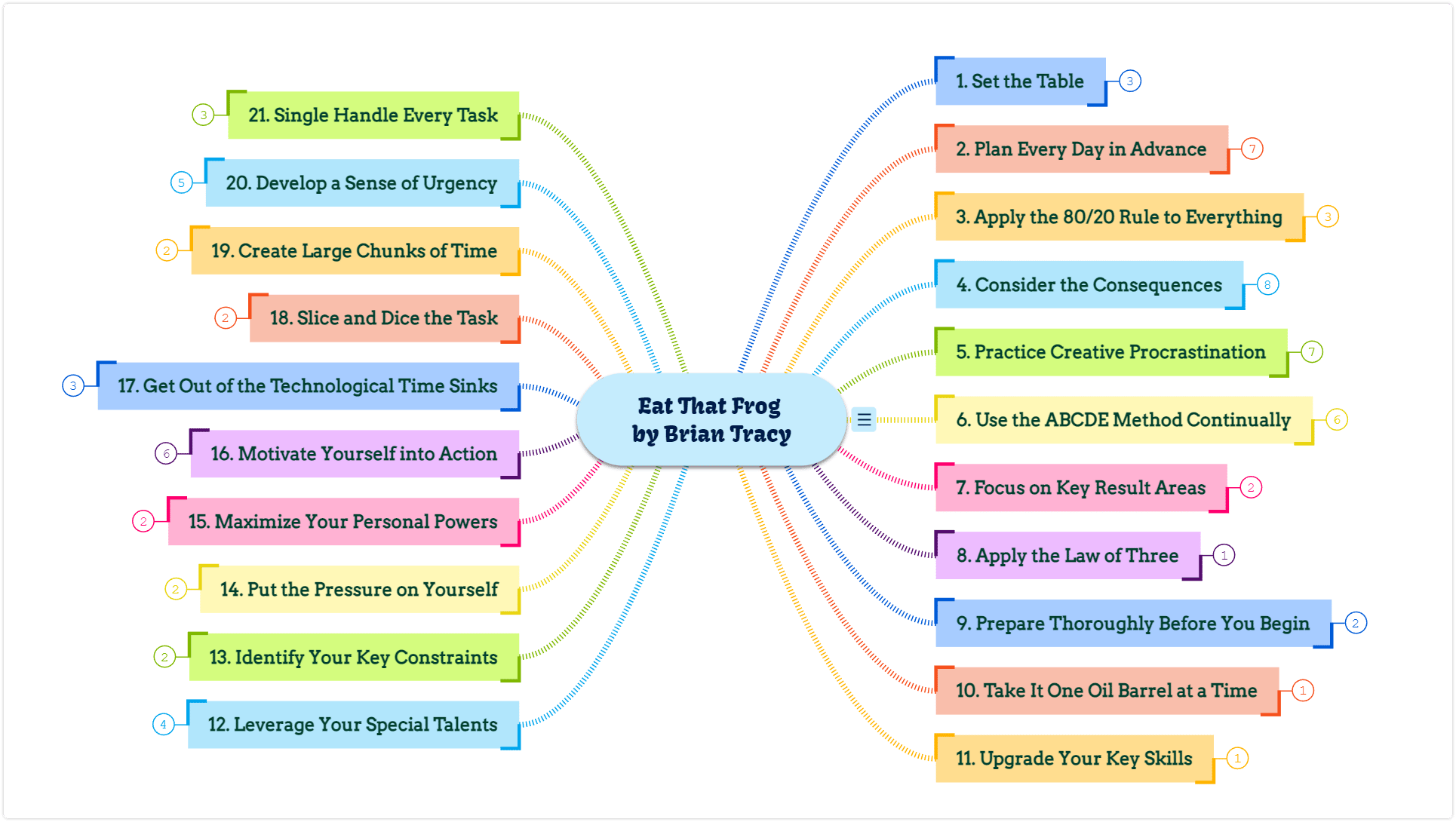
Then, you can create a summary based on it. Or, you can use it as a study tool to help you retain information. Read here more about how to write a book summary with a mind map, or watch this step by step video:
4. Use Online Mind Mapping Tools to Solve Problems
Mind maps are an easy way to organize ideas visually to solve problems.
Write the problem in the center and add branches for potential solutions. Use symbols, images, and colors to represent different aspects of the problem and solutions.
As you work, add more branches and sub-branches to show connections and relationships between ideas. This will help you identify patterns and potential solutions and evaluate the pros and cons. Use the mind map as a guide for implementing the solution and tracking progress.
It can also be helpful for brainstorming with a team or presenting the problem and solution to others.
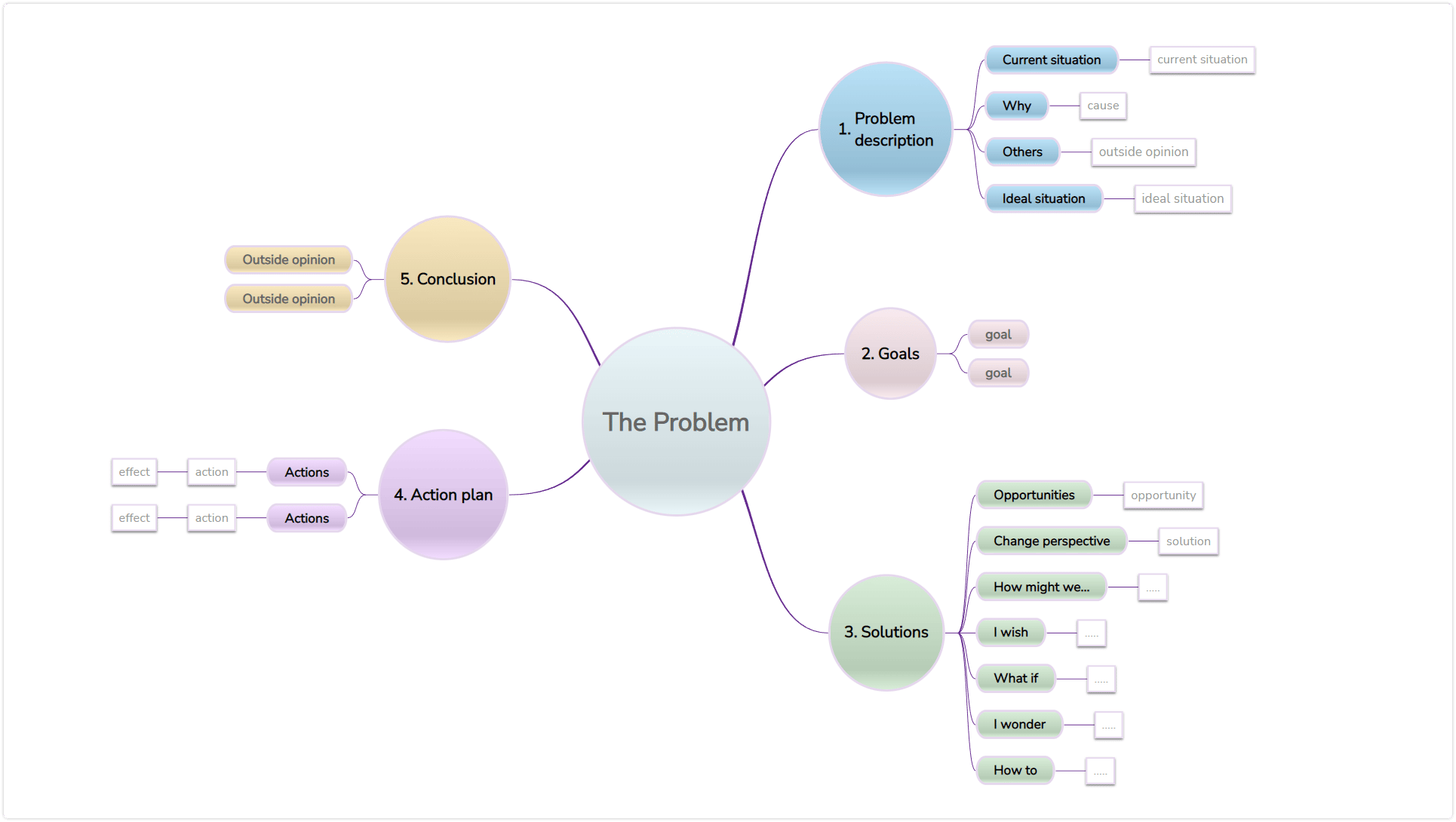
5. Use Mind Maps to Plan Events
How to plan an event? Mind maps can help plan events by organizing and visualizing all the different elements and tasks involved.
Start by writing the overall event in the center of the map. Then, branch out with lines that represent different elements, such as location, guest list, catering, decorations, entertainment, etc. Use symbols, images, or colors to represent different aspects of the event or tasks.
As you plan, add new branches and sub-branches to the mind map, connecting them appropriately. This will help you see connections between different tasks and elements. It will also make it easier to manage and track the progress of the planning.
You’ll also be able to identify any missing elements or tasks and evaluate the feasibility of different options. Let this be your guide as you make sure everything runs smoothly on the day of the event.
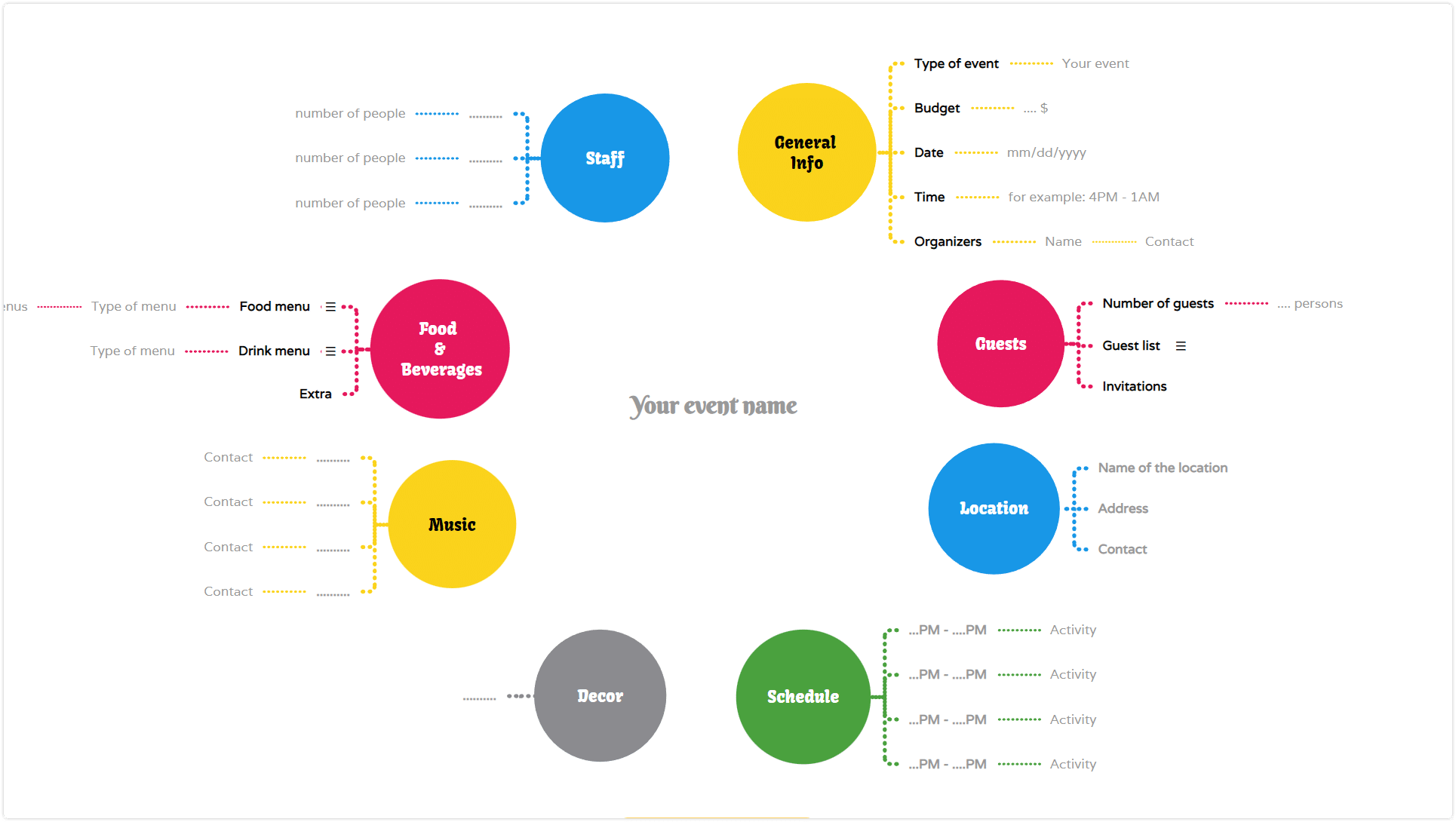
6. Use Online Mind Mapping Tools to Plan Trips
If you want to plan a trip, look no further than bubble maps. They will allow you to organize everything you need to do before you set out.
Start with the overall trip written in the center. Then, branch out with lines that represent different elements of the trip. You may want to include the final destination, transportation, accommodation, activities, budget, or your packing list.
This will help you manage and track the progress of the planning, identify missing elements or tasks and evaluate options. It can also help keep track of important information like flight details, accommodation reservations, and activities.
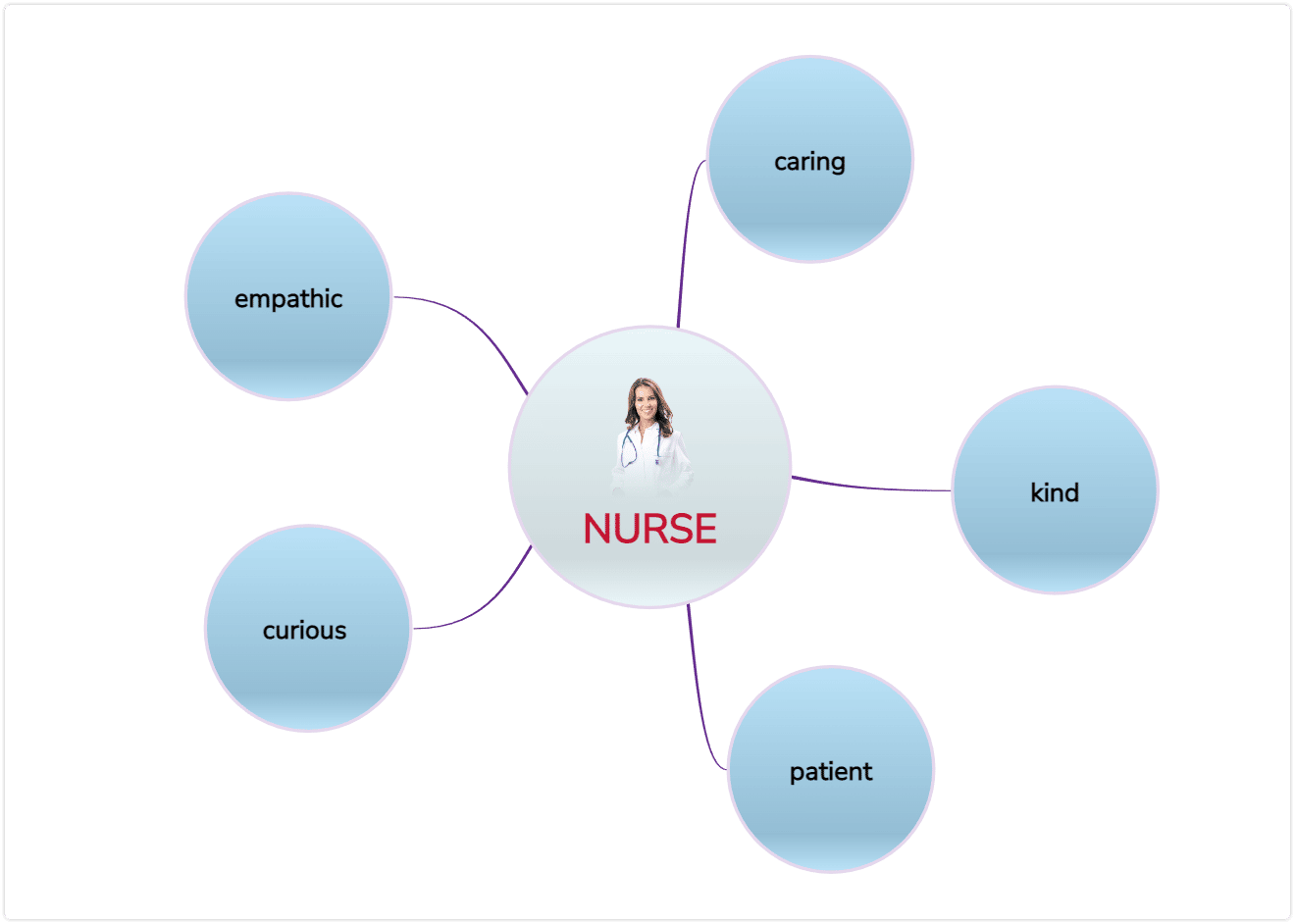
7. Use Mind Maps to Stop Procrastinating & Create To-Do Lists
A mind map can help you overcome procrastination by organizing and prioritizing tasks.
Start with a to-do list, adding your primary objectives in the center. Then, add the steps to achieve those goals as branches. They can be as simple as a single word or as complex as an entire paragraph. Include symbols, images, or colors to represent different priorities or deadlines.
Once completed, you’ll be able to treat it like a to-do list. If you have an internet connection and use an online tool, you can even check tasks off as you go.
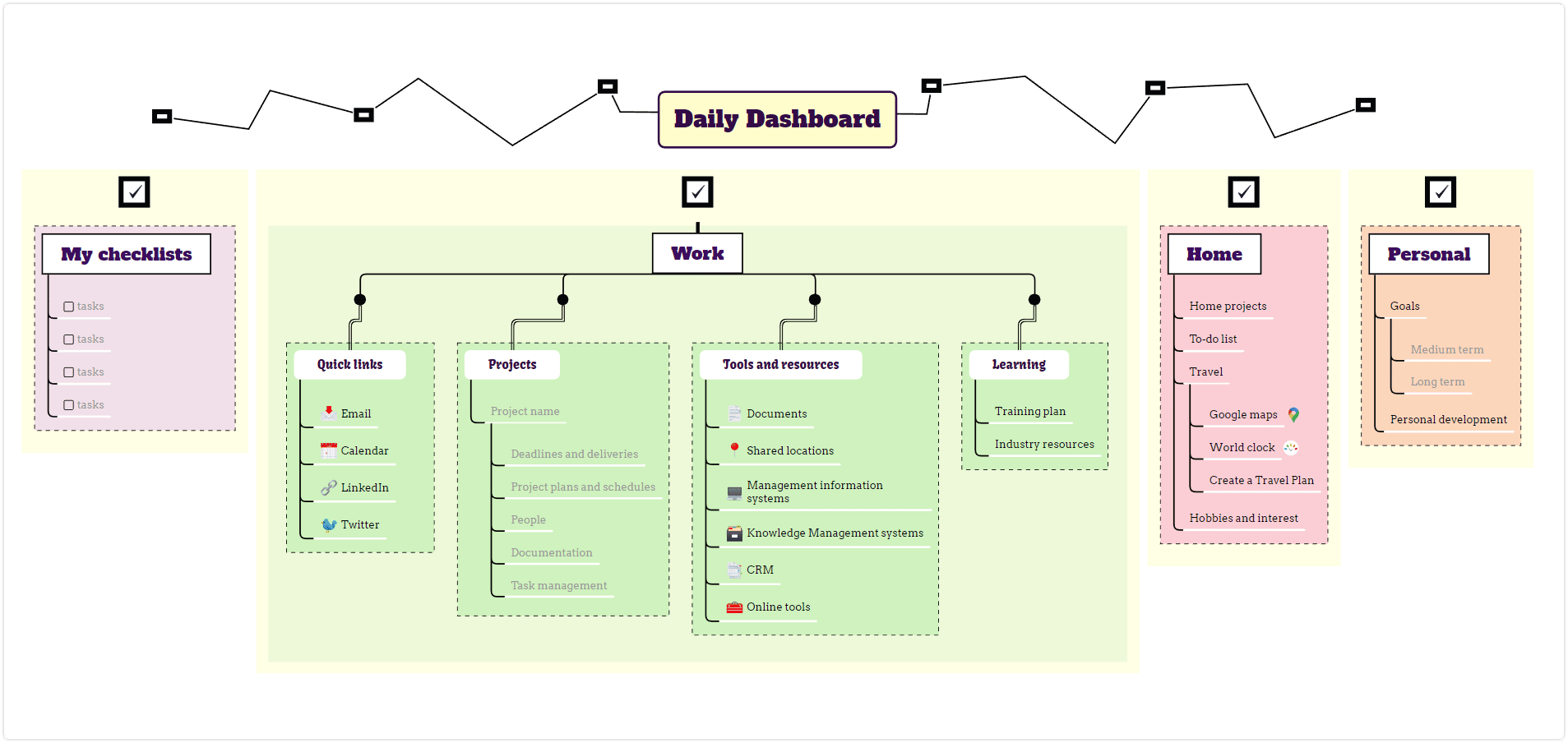
8. Use a Mind Map for Research
Spider maps and other visual diagrams can help you conduct research more efficiently. It gives you a place to organize and visualize information. And it makes it more understandable when you go to present it.
Begin your research mind map with your research topic, question, or main ideas. Then, create sub-branches that include your data, conclusions, and other info.
When creating a research-based spider diagram, remember to be concise on the surface. You’ll probably have a lot of information to include. But don’t try to cram everything onto the diagram itself. Instead, take advantage of online mapping software and link to fuller explanations elsewhere. This way, you won’t have a thousand words cluttering up your visual.
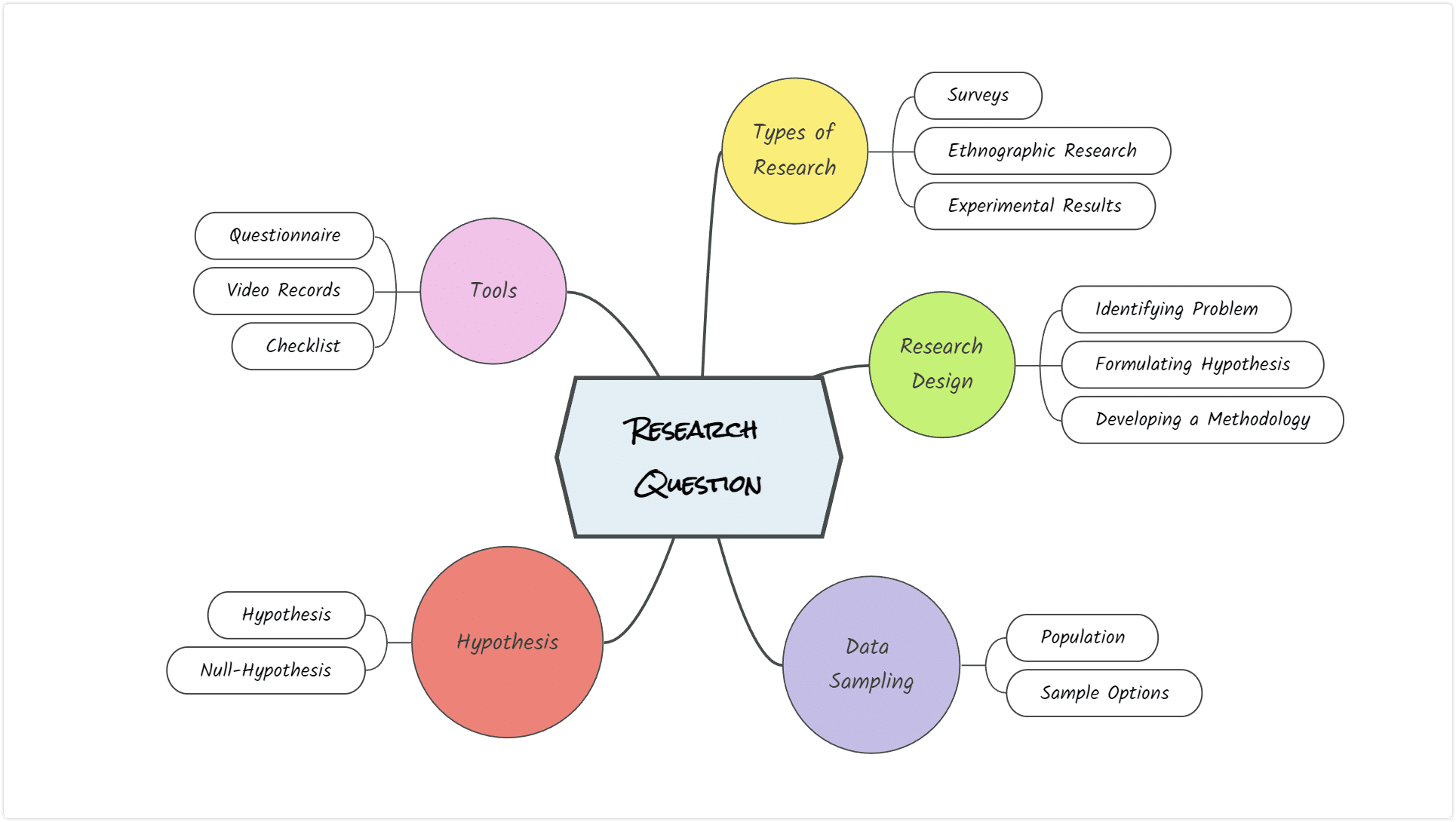
9. Use Mind Mapping to Learn a New Language
Learning a new language is tough. But you can streamline the process and learn faster by using a mind map to boost your knowledge retention.
You can create your diagram based on the language’s vocabulary or grammar. There might even be other approaches you could take. But like other visuals, use bubbles and branches to clarify relationships and aid in understanding.
When you’re finished, you’ll have a quick, easy way to review your new language at a glance.
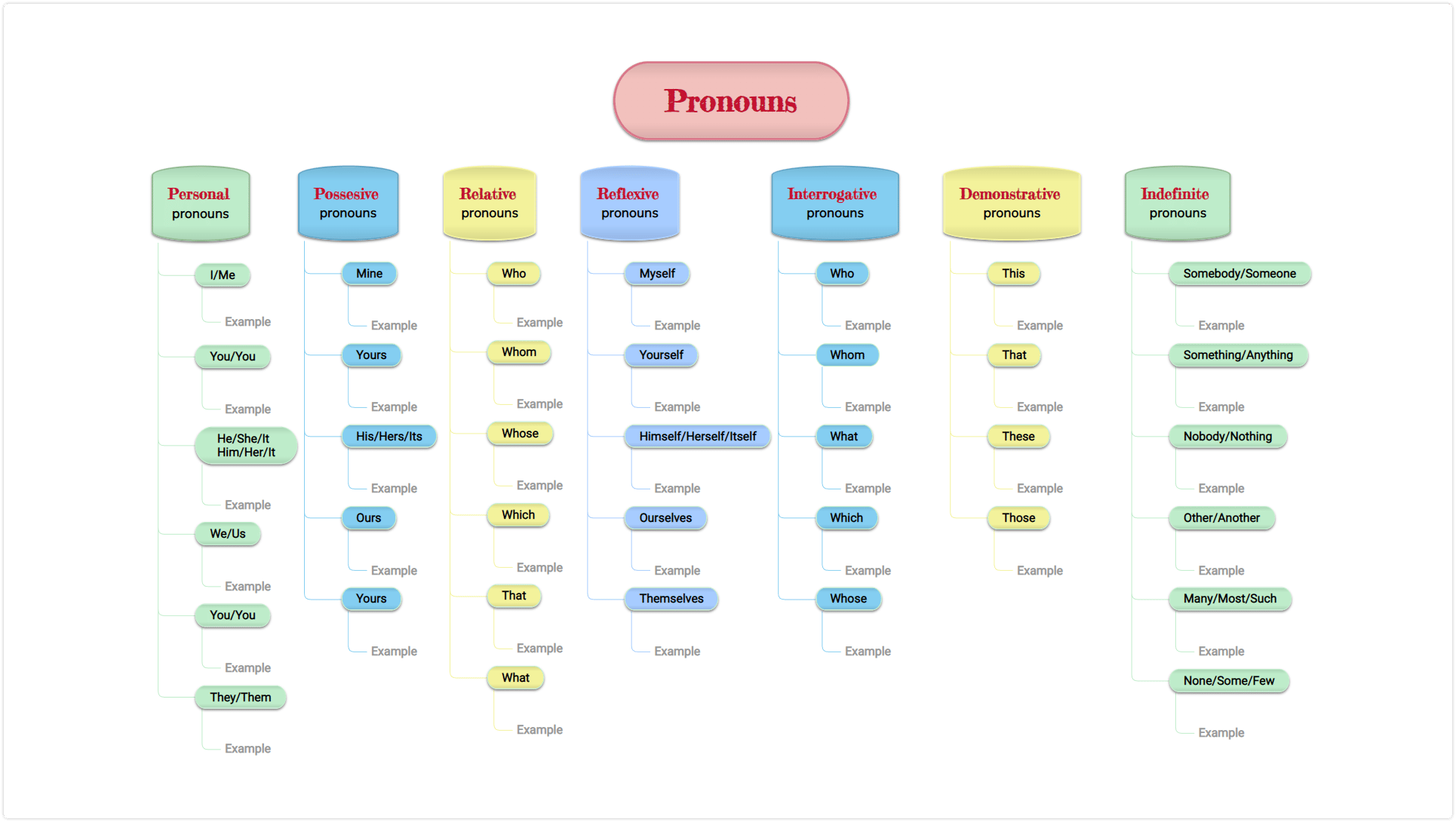
10. Use Mind Maps to Create a CV
Need a CV? One of the benefits of a mind map is its ability to make creating a CV easy.
You can start with your professional objective as the central image. Then, you can add your professional profile as branches around it. Include one for your education. Another for your work experience. Others for your skills, achievements, and more.
This will help you see the overall picture and identify any missing elements. Then, you can use quickly transfer all of the information from the mind map to a CV template.
It’s quick. It’s easy. And it’s sure to land you a job.
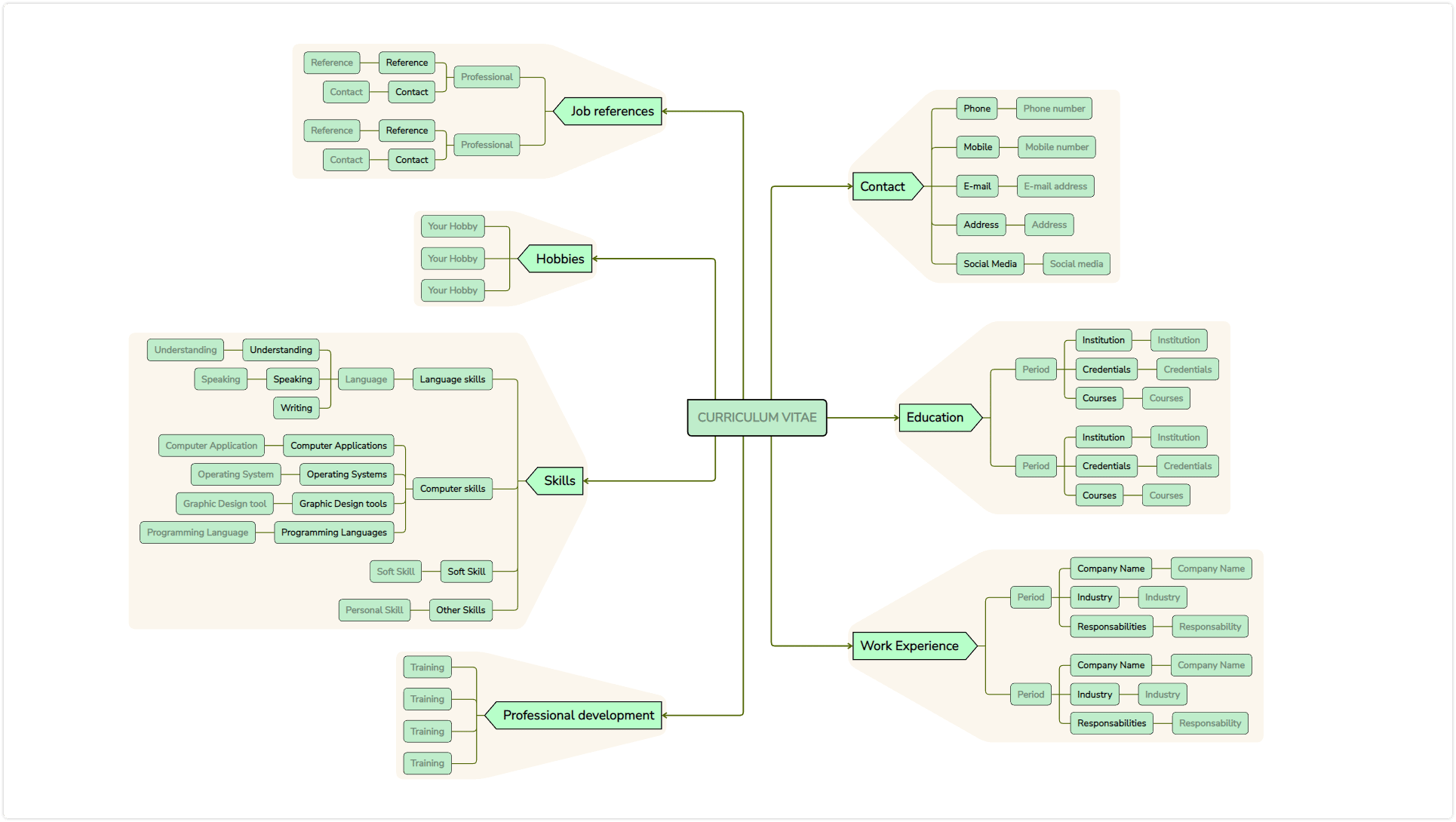
11. Use Mind Maps to Create a Presentation
Presenting information isn’t enough. You want to leave your clients or audience with something memorable and engaging. Fortunately, a mind map can help.
Put your presentation’s main idea in the center of the mind map. Then, add supporting ideas or concepts as supporting branches. You can develop ideas in a linear or nonlinear fashion, whichever works for your presentation.
As you go, you’ll likely see areas you can improve or prune. This is why mind mapping is such a great way to prepare for (and illustrate) your next speech or presentation.
12. Use Mind Mapping to Study & Memorize
Even if you don’t think you’re a visual learner (if you don’t know what is visual learning, read more here), mind mapping can help you increase your knowledge. They aid in the learning process. They make studying easier. And they’ll ensure your brain remembers things longer. To put it simply, they make your learning life better than ever.
If you want to take advantage of these benefits of mind mapping, start with the subject you’re studying. Then, add important facts, dates, or ideas as branches. You may want to include an example or two of whatever you’re studying. And you don’t have to be Leonardo Da Vinci. The aesthetics aren’t nearly as important as putting it together in a way that makes sense to you.
Creating a visual will engage different parts of the brain and make it easier to remember. And when you’re done, you can use it to quickly review material. It’s a win-win for learning.
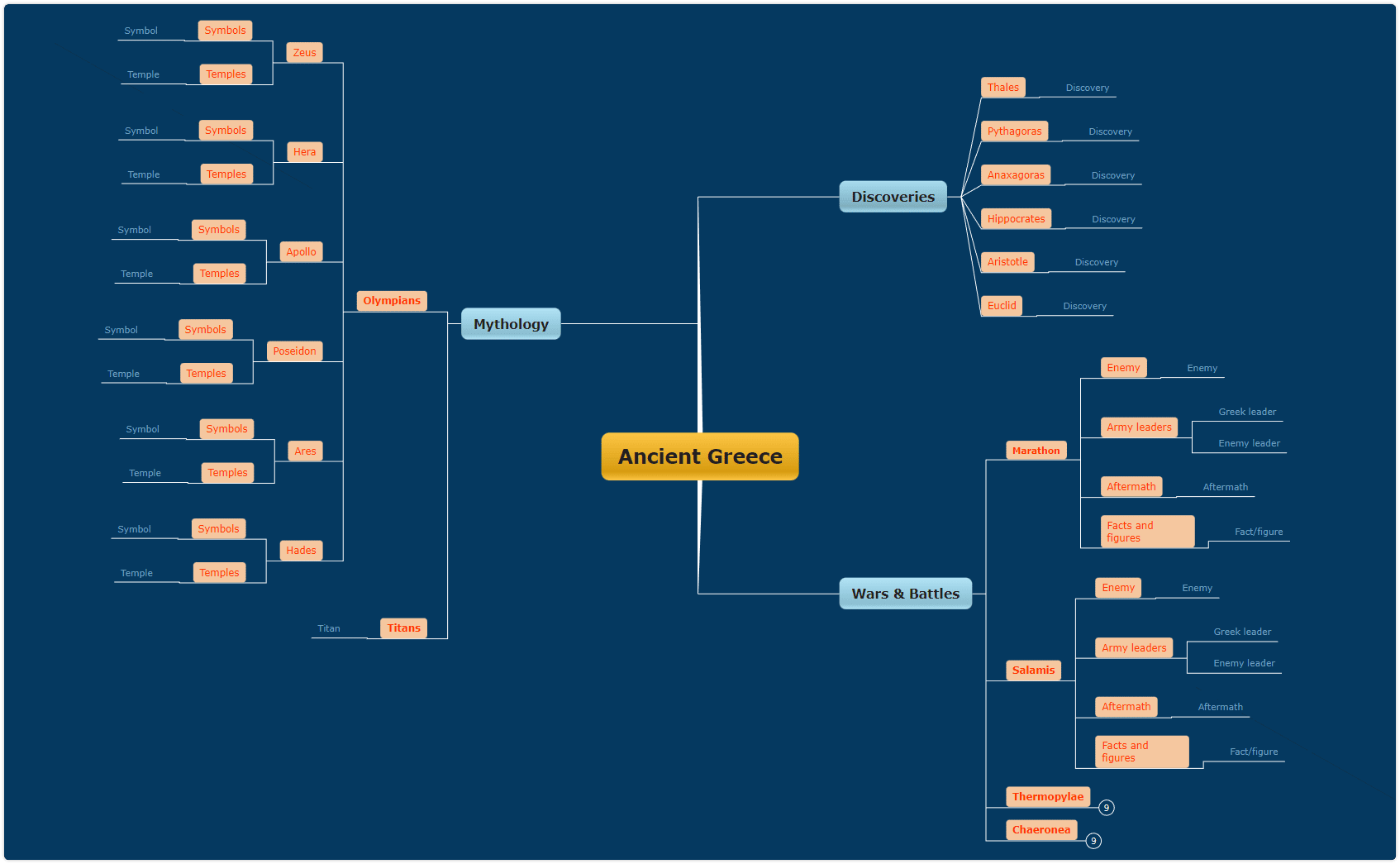
13. Use Mind Maps to Simplify Complex Ideas
One of the biggest benefits of mind mapping is how it can simplify complex ideas. Visuals like this have a way of aiding understanding and problem solving. That’s why they’re such powerful tools.
If you want to take advantage of them, start with the single central topic in the center. Then, add sub-branches that represent the key subtopics and other information. Add an example here and there. And don’t forget to use colors, fonts, and images to add greater clarity.
Mind mapping is a great way to identify patterns and simplify relationships. And when you’re done, you can share it with others.
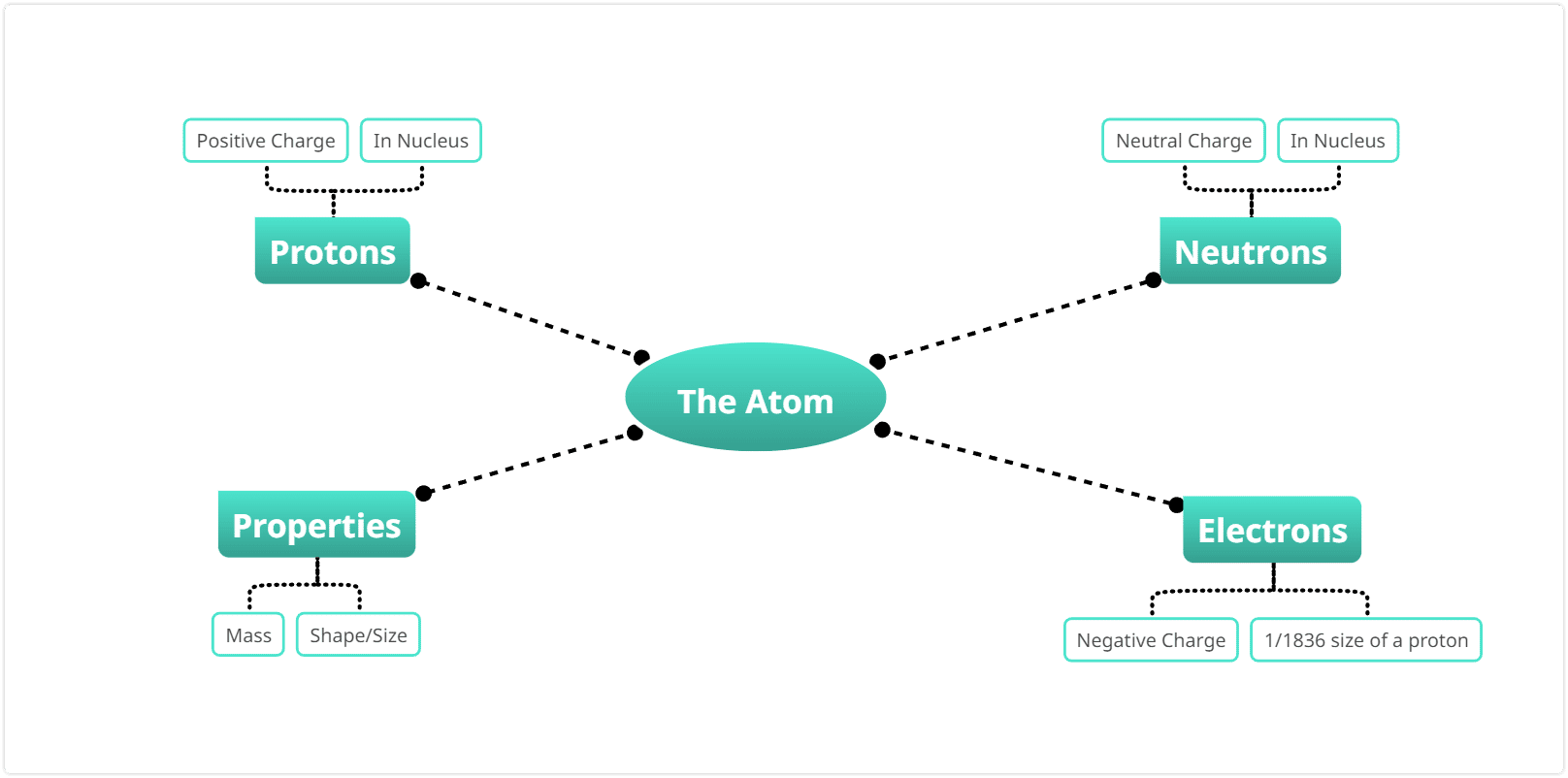
14. Use Mind Maps to Take Notes
Note taking doesn’t have to be a pain. With mind maps, you can organize all kinds of information. This is why they’re great for lectures. Or text books. Or websites. Or anywhere else you might be learning from.
First, learn how to take notes using mins maps. Start with your central idea and add key points as branches. Include symbols, images, fonts, and colors to effectively clarify relationships.
Make your life way easier by taking notes using a visual aid.
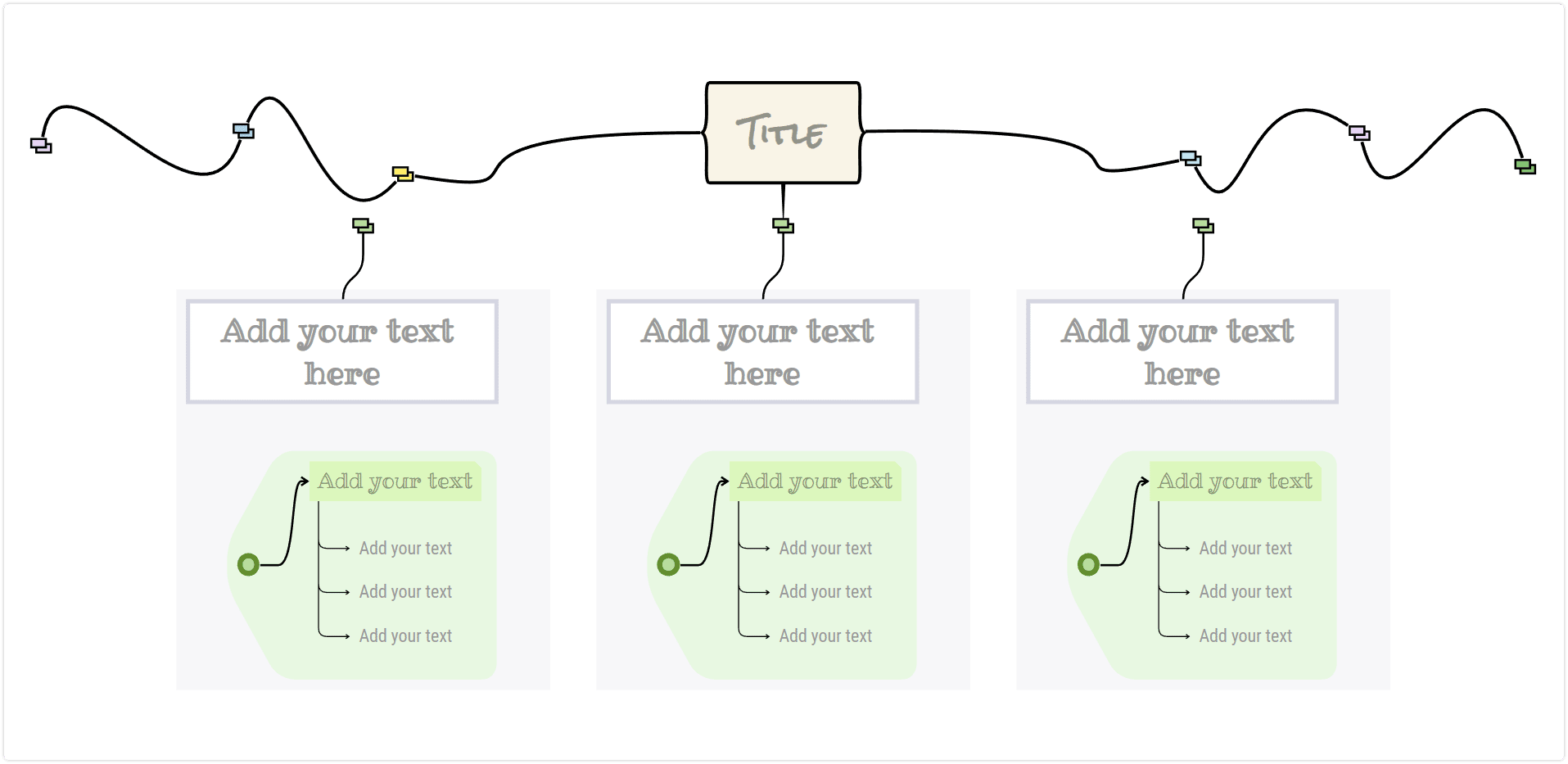
15. Use Mind Maps to Clarify Your Business Structure
Whether you’re involved in project management, advertising, or product development, the business structure is important. It clarifies chain-of-command. It streamlines decision making. And it identifies responsibilities for everyone in the whole company clearly and effectively.
Fortunately, mind mapping can help you understand and communicate your business structure. Start with your CEO and upper management. Then, add first, second, and third level departments and people.
You can also include responsibilities, relationships, and more. And when you’re done, you can share it with your staff, so they understand their place in the life of your business better.
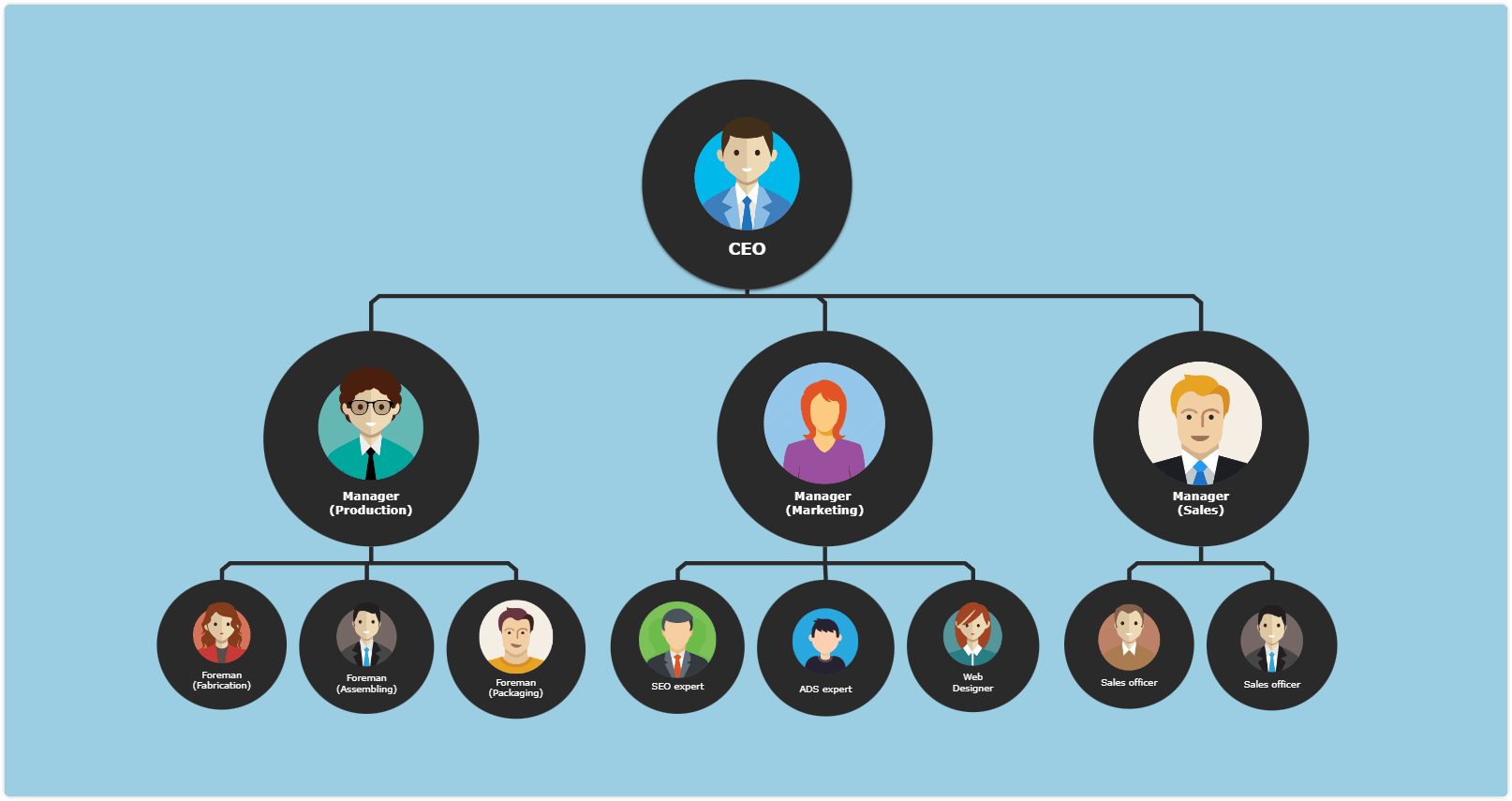
Using Mind Mapping Software
Now that you’re ready to start creating mind maps, you need a mind mapping program like Mindomo. It will allow you to quickly create and edit your mind maps. You can also make them more dynamic and flexible than with a paper map.
You’ll also be able to add images, video, audio, and links to your bubble maps. So they’ll be even more engaging and interactive. And since you can share them and collaborate on them, they’re great for group projects and businesses.
Finally, your visuals can be saved and exported. So you can print them out. Use them in a powerpoint. Or discover other ways to take advantage of these powerful tools.
Keep it smart, simple, and creative!
The Mindomo Team


